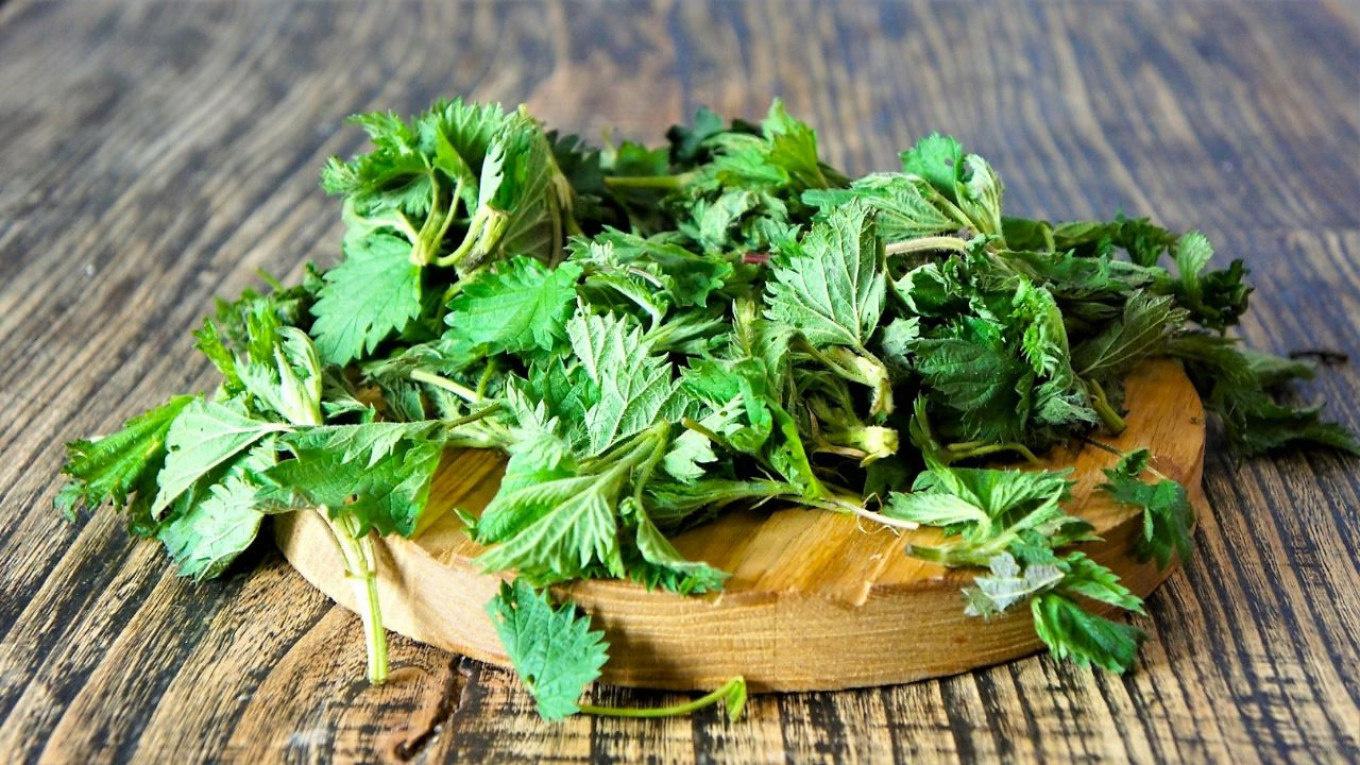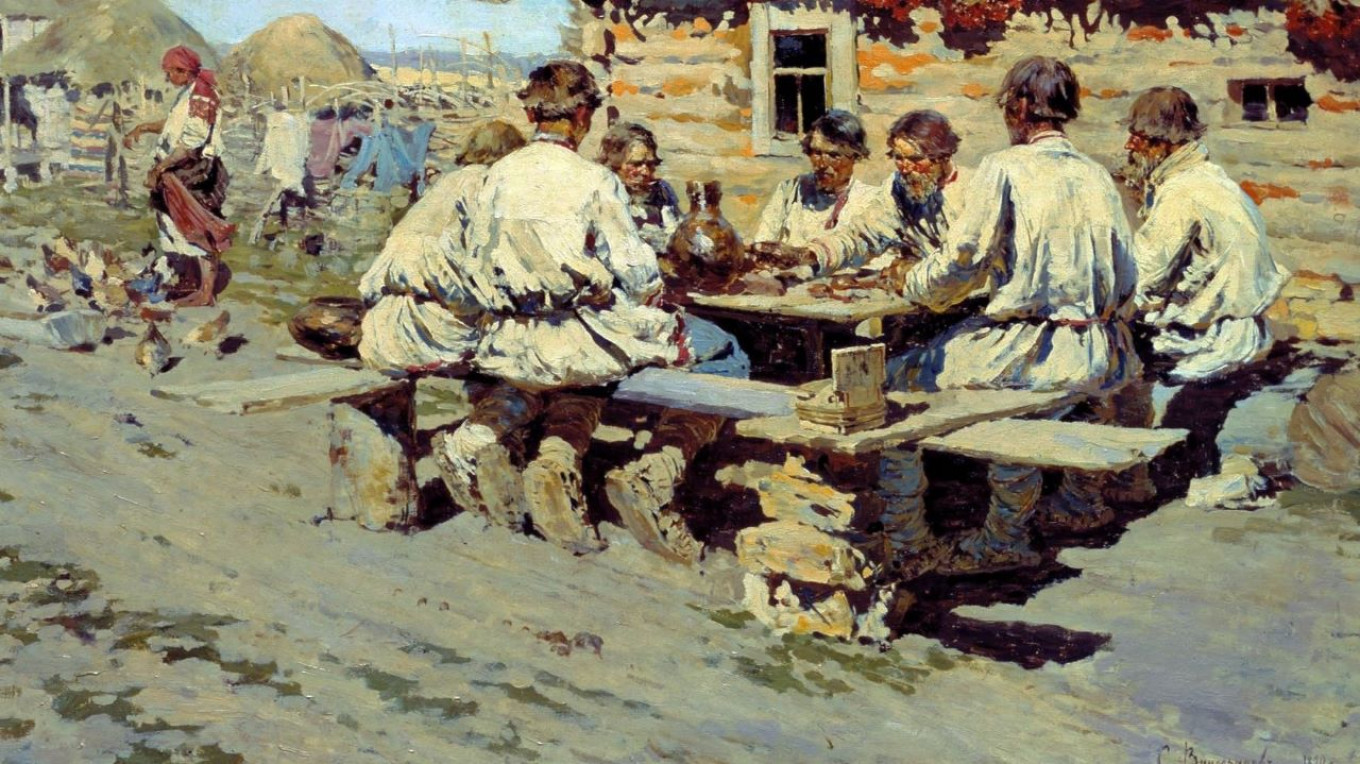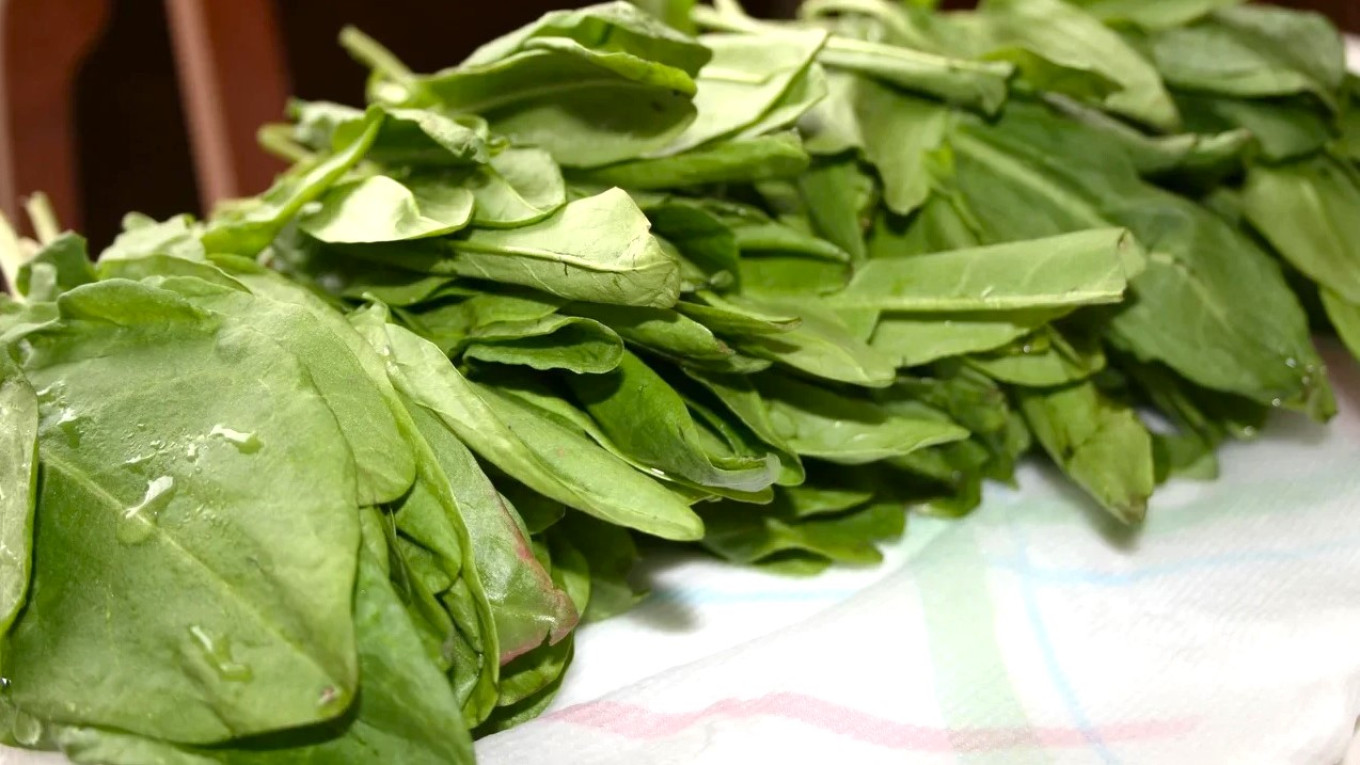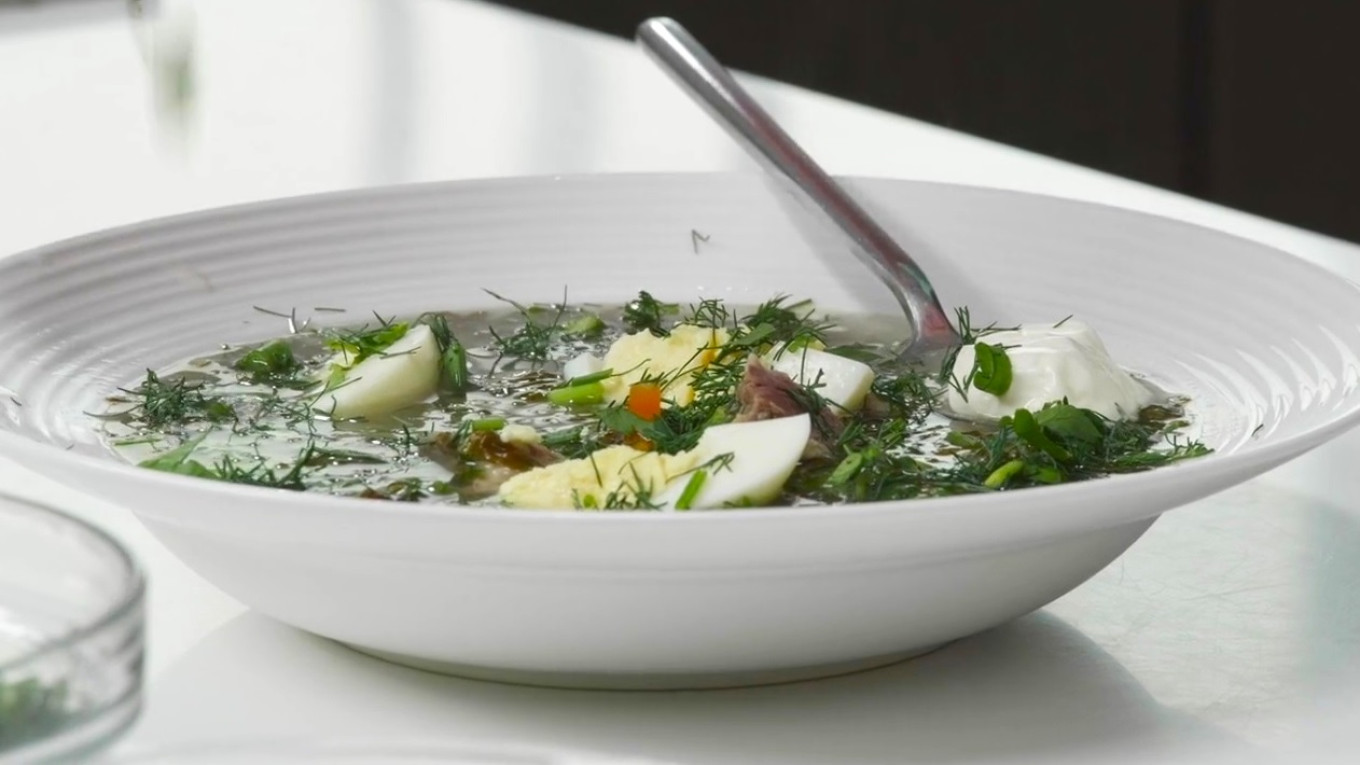Dishes made of wild greens — not herbs and lettuces grown in the garden — are not necessarily sign of hard times. Nettle, sorrel, ground elder and wild garlic have all been used in our kitchens since time immemorial. Even today one of the most popular May soups is “green” vegetable soup. In Ukraine and in the south of Russia this soup is called “green borshch” because it includes fresh sorrel.
But to the north, nettles are used. Everyone knows you can make wonderful ropes and cords out of nettles — no one argues with that. But nettles were always eaten, too — certainly in hard times, but also in ancient times, as far back as we have records. There are drawings of nettles in ancient herbal books, and many centuries ago people knew exactly how to make it into an edible and even tasty dish. The whole secret is to use only the very young, top leaves. They don’t yet have those sturdy thorns that pricked poor Elisa in Andersen’s fairy tale “The Wild Swans.” There are always four or five such leaves on each plant, at its very top.

The main dish made from nettles in Russian cuisine is vegetable soup (shchi). A collection of ethnographic works about the Kursk Province in 1862 states: “From November until mid-April shchi is made of sour cabbage or sauerkraut, and the rest of the year it’s made with different greens: young nettles, ground elder and quinoa.”
It might seem odd, but soup made of these simple greens has always been an event for Russians, perhaps because it’s the first soup of the season, the soup of spring. The Russian writer Mikhail Saltykov-Shchedrin wrote: “I wanted to write about how easy it is to walk along the streets in a cold coat and what a joy it feels to see the poplars blossoming in front of the Mariinsky hospital; about how we are already eating morels and shchi made of fresh nettles.”
In Russia shchi made of nettles has always been a popular dish. For the urban public it was the sign of spring, but for the peasants it was a familiar dish that helped them survive until the first harvest. Before cabbage came along, there was always one dish on the table: shchi made of sorrel, ground elder, or nettles. If there was still something in the larder, the shchi was seasoned with hemp milk or small dried fish. But more often the shchi was served without any garnishes at all.

This was the most primitive version of the dish. It was a very different dish when prepared by and for the wealthy urbanites. In the Expense Book of Patriarch Adrian for April 9, 1699 we find “nettle stew with fish belly” — fish bellies, Dahls’ dictionary tells us, were the “pieces of fish tucked in by the sides of the barrels, considered by someone with a sweet tooth as a delicacy.” On other days “nettle shchi with eggs” and “with sour cream” were served at the patriarch’s table.
At the other end of the scale, secular cuisine for the wealthy opened new prospects for nettle shchi. Radetsky’s “St. Petersburg Cuisine” (1862) is rightly considered the pinnacle of Russian culinary expertise of his era. And he had to include this traditional dish made with nettles, although he used its French name:
“Green Nettle Shchi” (Potage tchy d’orties)
Pick over, wash, and blanch (pour boiling water over) young nettle leaves, drain in a colander, squeeze until dry, and after picking the leaves over again, chop finely, put in butter in a saucepan and sauté, and when the nettles are soft, add chopped sorrel, as much broth as is necessary to make soup, bring to a boil, and before serving, thicken with liason and serve with one of the following: pork sausages, dumplings or deviled eggs.
If you are puzzled by “liaison,” it’s actually very simple. Radetsky explains that you beat four egg yolks in a saucepan, thin with cream or sour cream, and then strain through a sieve. When the shchi is ready, pour a ladleful of broth into the liason and stir. Then, pour the soup into bowls and add the mixture to each bowl.
As you can see, the recipe for nettle soup over the centuries has turned from a way to keep from starving to death in a peasant hut into an elegant dish on the table of even the wealthiest Russians.
The same can be said of sorrel. One of the first seasonal products, it immediately goes into soup. And its pleasant and biting acidity perfectly complements rich Russian soups, making them easy-to-digest and invigorating.

This soup recipe is very old, mentioned even by Vasily Lyovshin in his 1795 “Russian Cookery”: “Chop the sorrel leaves finely, fry in butter, sprinkle with flour, pour in meat broth. Finish with egg yolks and serve with croutons of white bread.”
The trick of this dish is keeping a nice rich green color. After all, as we know from textbooks, when heating an acid product (sorrel is very acidic) the chlorophyll in the leaves is destroyed. That’s why sorrel should be heat-treated (and chopped or torn) separately from other greens. As you can see from the above recipe, in ancient Russian cuisine they even sautéed the chopped greens in fat (oil) to keep the bright green color during cooking and storage. Today this might seem excessive. But remember this quality of sorrel.
This soup is “historical” and worthy of attention, even though it has changed over the years. Here is our family recipe.

Green Borshch
For 6 servings
Ingredients
- Generous 1 lb beef brisket
- 2 onions
- 2 carrots
- 1 celery stalk
- 300 g (10.5 oz) potatoes
- 300 g (10.5 oz) sorrel
- Cilantro, parsley, green onions, dill to taste
- 3 chicken eggs
- Sour cream to taste
- Salt
Instructions
- Make broth from the meat, 1 carrot, 1 onion and a celery stalk. When it comes to a boil skim off the foam, then lower the heat and cook for 2-3 hours. When the broth is ready, remove cooked vegetables and meat with a slotted spoon.
- Pull the meat from the broth, let it cool and cut into small cubes.
- Clean the sorrel, wash, trim the stalks and cut it into julienne strips.
- Peel potatoes and cut them into slices.
- Peel and cut carrots into julienne strips.
- Peel and dice onions.
- Shred the greens finely.
- Put potatoes in the broth and cook for 5-6 minutes.
- Add onions and carrots, cook for another 5-6 minutes.
- Add sliced boiled meat to the soup.
- Add the sorrel, bring just to the boiling point and then immediately turn off the heat. Do not let it boil!
- Season with herbs and let the soup stand for 15 minutes so that the sorrel and herbs give off all their flavors.
- Boil the eggs (8 minutes after the water comes to a boil). Let cool in cold water. Serve with sour cream and boiled egg.





